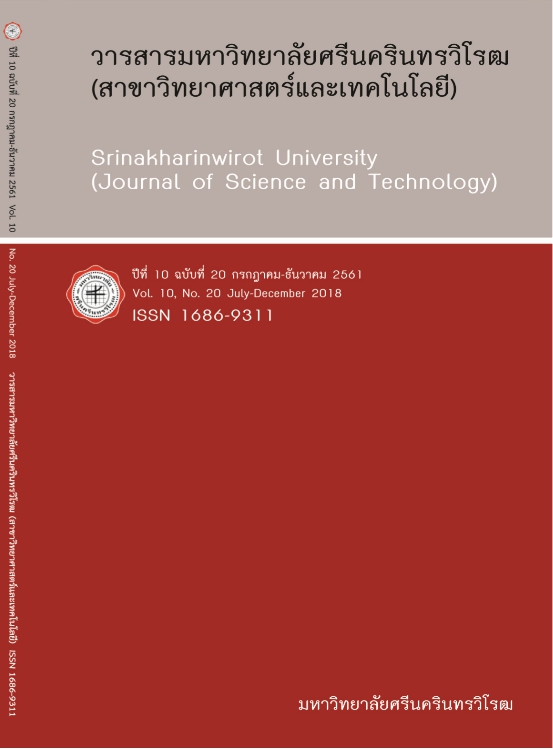การวิเคราะห์พลวัตระบบสำหรับอุตสาหกรรมผลิตไฟฟ้าจากพลังงานทดแทนในประเทศไทย AN ANALYSIS SYSTEM DYNAMICS FOR RENEWABLE ENERGY POWER PLANTS INDUSTRY IN THAILAND
Keywords:
System Dynamics, Renewable Energy, Renewable Energy Power Plants IndustryAbstract
This research is a study of the System Dynamics on the renewable energy industry in Thailand. We began with the review of secondary data about the electricity generating situation in Thailand. After that, the System Dynamics model was constructed by using Vensim PLE x32 program. The model was tested on various factors through 12 years of electricity generating: The results showed that, the System Dynamics of the renewable energy industry can calculate the profits from the sell of electricity from renewable energy in the 12 years. The first three orders, by profit, are: Solar energy profit up to 15,851,300.00 baht, Wind energy profit up to 9,636,300.00 baht, and Biogas energy profit up to 2,682,550.00 baht. When compare the results to Alternative Energy Development Plan: AEDP (2012-2021), we found that our results correlate to the AEDP (2012-2021) plan. Additionally, the model can be used to forecast the state of the electricity generating from renewable energy very well.
Downloads
References
[2] Department of Alternative Energy Development and Efficiency, Ministry of Energy. (2016). Alternative Energy Development Plan 25% in 10 years (AEDP2015). Department of Alternative Energy Development and Efficiency.
[3] Electricity Generating Public Co., Ltd. (2015). Solar Thermal Power. Retrieved April 12, 2015, from http://www.egco.com/th/energy_knowledge_solar3.a
[4] Department of Alternative Energy Development and Efficiency, Ministry of Energy. (2012). Status of Solar Power in Thailand (2009-2013). Bangkok: Bureau of Solar Energy Development.
[5] Energy Policy and Planning Office, Ministry of Energy. (2016). Renewable Energy Policy in Feed-in Tariff. Retrieved April 14, 2016, from www.eppo.go.th/power/fit-seminar/FiT_2016.pdf
[6] Department of Alternative Energy Development and Efficiency, Ministry of Energy. (2014). Thailand Renewable Energy Report. Bangkok: Amarin Printing & Publishing Public Co., Ltd. 19.
[7] Linna Hou. (2015). System Dynamics Simulation of Large-Scale Generation System for Designing Wind Power Policy in China. Hindawi Publishing Corporation Discrete Dynamics in Nature and Society Volume 2015.
[8] Kong Chyong, William J. Nuttall.; and David M. Reiner. (2009). Dynamics of the UK natural gas industry: System dynamics modelling and long-term energy policy analysis. Technological Forecasting & Social Change. 76. 339-357.
[9] Pita, P., Tia, W., Suksuntornsiri, P., Limpitipanich, P.; & Limmeechockchai, B. (2015). Assessment of Feed-in Tariff Policy in Thailand: Impacts on National Electricity Prices. Energy Procedia. 79: 584-589.
Downloads
Published
How to Cite
Issue
Section
License
Srinakharinwirot University Journal of Sciences and Technology is licensed Under a Creative Commons Attribution-NonCommercial-NoDerivs 4.0 International (CC-BY-NC-ND 4.0) License, Unless Otherwise Stated. Please Read Journal Policies Page for More Information on Open Access, Copyright and Permissions.



